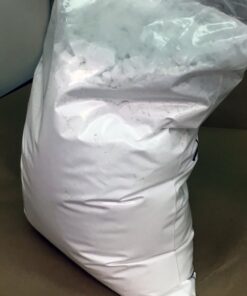Pure Cokaine Hydrochloride
$350.00 – $1,900.00
Cocaine is listed as a Schedule II controlled substance because it has medical use and a high potential for misuse. Click here to review detailed descriptions of each drug schedule.
Cocaine has long been known for its quick numbing abilities. For this reason many early medicines, such as toothache drops, nausea pills, and pills to ease sinus pain, emphasized its pain relief qualities. The drug still has limited use in medicine today as a local anesthetic. It is occasionally used in medical procedures as a topical anesthetic for skin lacerations, nose or throat surgeries, and dental procedures.
Cocaine is listed as a Schedule II controlled substance because it has medical use and a high potential for misuse. Click here to review detailed descriptions of each drug schedule.
Cocaine has long been known for its quick numbing abilities. For this reason many early medicines, such as toothache drops, nausea pills, and pills to ease sinus pain, emphasized its pain relief qualities. The drug still has limited use in medicine today as a local anesthetic. It is occasionally used in medical procedures as a topical anesthetic for skin lacerations, nose or throat surgeries, and dental procedures.
Coca, which is mainly grown in Colombia, Peru, and Bolivia, is a highly addictive drug that is processed in jungle laboratories where the coca is extracted from the leaves to produce cocaine. Until the early 1900s, cocaine was commonly used in Western medicine as an anesthetic because of its numbing ability. However, in the 1970s cocaine reemerged as an expensive, high status misused drug. Cocaine usage increased throughout the United States when its forms began to vary and it became more widely available and cheaper.
For over 4,000 years coca, or Erythroxylon coca, has been used as a medicine and stimulant in what is now Colombia, Peru, and Bolivia. European explorers in the 16th century made note of its existence and how it was used. In South America inhabitants would chew the leaves as they were believed to elevate mood, help with digestion, and suppress appetites. Up to the mid-19th century coca growing and use had been restricted to the area of its natural habitat, the Andes mountain range of the northwestern region of South America. Coca did not find use in Western medicine until the late 19th century when American drug companies began to explore that part of the world for new medicines. At first considered a safe stimulant and nerve tonic, coca’s addictive and destructive properties became apparent within 30 years of its introduction as a pharmaceutical product.
When cocaine reappeared in the 1970s it was touted as the champagne of drugs because it was expensive, high status, and said to have no serious consequences. The price dropped steadily, and by the mid-1980s, six million Americans used it on a regular basis. Cocaine was gradually rediscovered to be highly addictive and dangerous, a fact driven home by the death of college basketball star Len Bias in June 1986. Due to its chemical make-up, the body processes cocaine as a stimulant. Because the body begins to rely on the stimulant, there are long term health problems that individuals may suffer from. These problems include stomach ulcers, severe depression, inflammation or palpitations of the heart, and bleeding in the lungs. Cocaine can also affect the function of the brain and its ability to regulate stress and mood.
Today, groups in Colombia produce 70 to 80 percent of the world’s cocaine, which is made from locally grown coca plants and cocaine base imported from Peru and Bolivia. It is estimated that Colombia produces 400 million dollars’ worth of cocaine each week.
| Quantity | 10 Grams, 28 Grams, 100 Grams, 500 Grams, 1 Kg |
|---|
Be the first to review “Pure Cokaine Hydrochloride” Cancel reply
Related products
Pharmaceuticals & Researched Chemics
Pure Cryztal Methamphetammine
Pharmaceuticals & Researched Chemics
Mephe-drone (4mmc)
Pharmaceuticals & Researched Chemics
Amphetaminee Sulfhate Tablets 10mg
Pharmaceuticals & Researched Chemics
Pure MDMA (Ecstacy)
Pharmaceuticals & Researched Chemics
GHB and GBL 100ml
Pharmaceuticals & Researched Chemics
Oxycontin-Hydrocodone 80mg, 30mg
Pharmaceuticals & Researched Chemics
Roofies Rohypnoll 2mg
Pharmaceuticals & Researched Chemics












Reviews
There are no reviews yet.